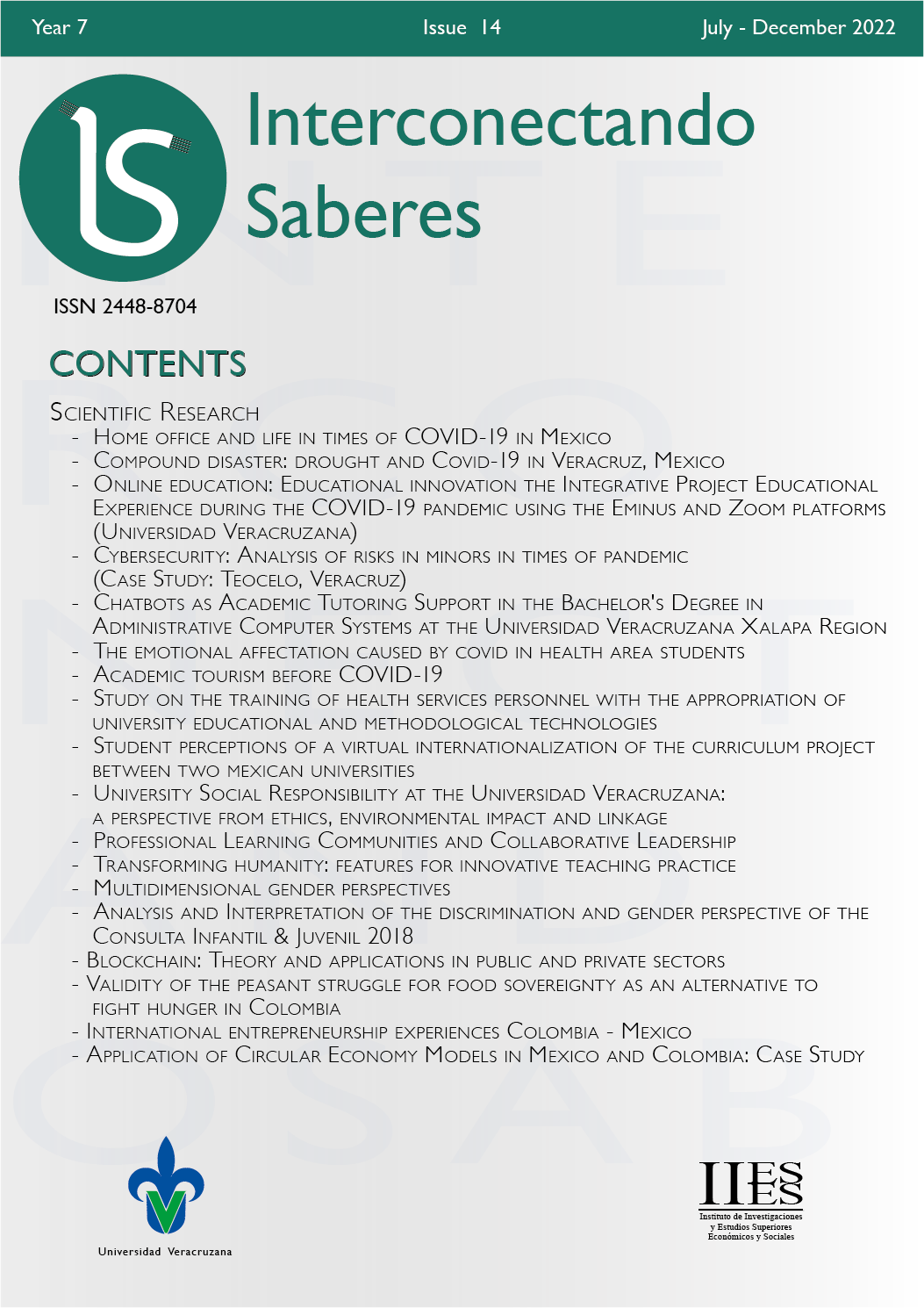Abstract
Mentoring at the Universidad Veracruzana represents a fundamental instrument for supporting and offering accompaniment to students through their academic life. The SARS-CoV-2 virus contingency disrupted all areas, including education, and promoted the use of Information and Communication Technologies. In particular, Artificial Intelligence tools, such as chatbots, have proved to be useful to support mentoring activities while improving performance metrics such as availability, level of knowledge, time and quality of response, among others. This paper presents the development, implementation and evaluation of a chatbot to support mentoring of the bachelor's degree in Administrative Computer Systems of the Faculty of Accounting and Administration of the Universidad Veracruzana.
References
Cortés, P. (2015). Facultad de Contaduría y Administración: 66 años de historia. Universo,14(594). https://www.uv.mx/universo/general/facultad-de-contaduria-y-administracion-66-anos-de-historia/#:~:text=La%20Facultad%20de%20Contadur%C3%ADa%20y%20Administraci%C3%B3n%20en%20sus%20inicios%20fue,profesor%20Daniel%20Aguilar%2C%20V%C3%ADctor%20G.
Google Cloud (s. f.). flujo básico para la coincidencia de intents y respuesta al usuario final. [Sitio web]. Recuperado 02 de mayo de 2022, de https://cloud.google.com/dialogflow/es/docs/intents-overview
GUSCHAT. (2017). Tipos de chatbots. www.cioal.com/2017/10/19/cuales-los-tipos-chatbots-empresa-necesita.
Orozco, M., Panizza, L.,Vegega, C.,Pytel, P., y Pollo, M.(2020). Metodología de implementación de un Chatbot como tutor virtual en el ámbito educativo. XXII Workshop de Investigadores en Ciencias de la Computación (WICC 2020), 873-877. http://sedici.unlp.edu.ar/handle/10915/103870
R. Ranoliya, B., Raghuwanshi, N., y Singh, S. (2017). Chatbot for university related FAQs. In 2017 international conference on advances in computing, communications and informatics, pp. 1525–1530.
Rouhiainen, L. (2018). Inteligencia artificial. Madrid: Alienta Editorial.
Statista. (2022). Global social networks ranked by number of users 2022 [Sitio web]. Recuperado 14 de mayo de 2022, de https://www.statista.com/statistics/272014/global-social-networks-ranked-by-number-of-users/
Universidad Veracruzana (s.f.-a). Nosotros. Recuperado 07 de mayo de 2022, de https://www.uv.mx/universidad/presentacion/
Universidad Veracruzana (s.f.-b). Departamento de Apoyo a la Formación Integral del Estudiante. Recuperado 08 de mayo de 2022, de https://www.uv.mx/formacionintegral/nosotros/antecedentes-y-objetivos/
Universidad Veracruzana. (1999). Reglamento del Sistema Institucional de Tutorías. Legislación Universitaria. Universidad Veracruzana. Art. 7. https://www.uv.mx/legislacion/files/2012/12/Reglamento_del_Sistema_Institucional_de_Tutorias.pdf

This work is licensed under a Creative Commons Attribution-NonCommercial-NoDerivatives 4.0 International License.
Copyright (c) 2022 Gustavo Ortiz Hernández, Alma Rosa Galindo Monfil, Brenda Marina Martínez Herrera, Miguel Ángel Gálvez Vázquez


